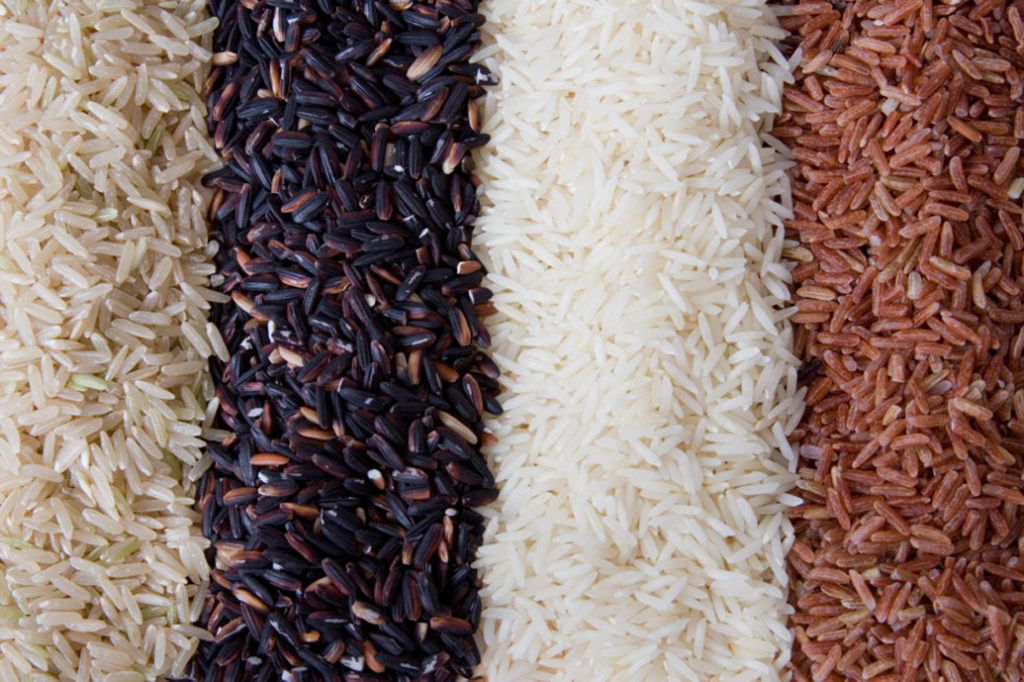Quinoa, cauliflower rice, and barley are excellent rice alternatives for diabetics. These options have lower glycemic indices and provide more nutrients.
Diabetics need to manage their blood sugar levels carefully, making rice a less ideal choice due to its high glycemic index. Fortunately, several alternatives can fit seamlessly into a diabetic-friendly diet. Quinoa is rich in protein and fiber, making it a nutritious option.
Cauliflower rice, made from finely chopped cauliflower, is low in carbs and calories. Barley offers a chewy texture and is packed with fiber, which helps regulate blood sugar. These substitutes not only offer health benefits but also add variety to meals, helping diabetics maintain a balanced and enjoyable diet.
Introduction To Rice Alternatives
Rice is a staple food in many cultures. But for diabetics, rice can be problematic. Rice has a high glycemic index, which can spike blood sugar levels. Thankfully, there are many rice alternatives that are both delicious and diabetic-friendly.
Why Choose Alternatives?
Rice alternatives help manage blood sugar levels better. They have lower glycemic indexes. This means they release sugar into the blood more slowly. This lessens the chance of unexpected blood sugar rises. Below is a table comparing the glycemic index of rice and some alternatives:
| Food | Glycemic Index |
|---|---|
| White Rice | 73 |
| Brown Rice | 68 |
| Quinoa | 53 |
| Cauliflower Rice | 15 |
Benefits For Diabetics
Switching to rice alternatives offers many benefits for diabetics. Quinoa is rich in protein and fiber, which helps stabilize blood sugar levels. Cauliflower rice is low in carbs and calories. It is a great choice for weight management.
- Lower glycemic index: Helps keep blood sugar stable.
- High in fiber: Improves digestion and promotes fullness.
- Rich in nutrients: supplies vital minerals and vitamins.
Here is an ordered list of popular rice alternatives for diabetics:
- Quinoa
- Cauliflower Rice
- Barley
- Farro
- Millet
These alternatives are not just healthy but also versatile. You can use them in many recipes to make your meals interesting and healthy.
Quinoa: The Protein-packed Grain
Quinoa is a wonderful rice alternative for diabetics. It is adaptable in addition to being nutrient-dense. This ancient grain stands out due to its high protein content. Quinoa can help manage blood sugar levels effectively.
Nutritional Profile
Quinoa is a nutritional powerhouse. Here’s a brief overview of its nutritional value:
| Nutrient | Amount per 100g |
|---|---|
| Calories | 120 |
| Protein | 4.1g |
| Carbohydrates | 21.3g |
| Fiber | 2.8g |
| Fat | 1.9g |
Quinoa also contains essential vitamins and minerals:
- Magnesium
- Iron
- Potassium
- Vitamin B6
How To Cook Quinoa
Cooking quinoa is simple and quick. Follow these steps to cook perfect quinoa:
- Rinse the quinoa under cold water to remove saponins.
- Use a ratio of 1 cup quinoa to 2 cups water.
- Fill a medium pot with water and bring it to a boil.
- Add the rinsed quinoa to the boiling water.
- Cover the pot and lower the heat to a low level.
- Let it simmer for about 15 minutes.
- After turning off the heat, leave it for five minutes.
- Fluff with a fork before serving.
Quinoa can be enjoyed in salads, soups, or as a side dish. Many people love it for its fluffy texture and nutty flavor.
Cauliflower Rice: A Low-carb Substitute
Cauliflower rice serves as a fantastic low-carb alternative for diabetics. It mimics the texture of traditional rice while offering fewer carbs. This makes it a great choice for blood sugar control. Let’s dive into its benefits and how to prepare it.
Health Benefits
- Low in Carbs: Cauliflower rice contains fewer carbs than regular rice.
- Rich in Fiber: It helps in digestion and keeps you full longer.
- High in Vitamins: Packed with vitamins C, K, and B6.
- Antioxidants: Contains antioxidants that fight inflammation.
- Low-Calorie: Helps in weight management due to its low-calorie content.
Preparation Tips
- Choose Fresh Cauliflower: Select a firm, white cauliflower head.
- Wash and Dry: Clean the cauliflower thoroughly and pat it dry.
- Grate the Cauliflower: Use a food processor or a box grater.
- Cook Lightly: Sauté the grated cauliflower in olive oil for 5 minutes.
- Season: Add salt, pepper, and your favorite herbs.
By following these steps, you can easily prepare delicious cauliflower rice. Enjoy a healthy, diabetic-friendly meal!
Barley: A Fiber-rich Option
For diabetics seeking rice alternatives, barley is an excellent choice. This grain is rich in fiber, making it a healthy option. Barley helps control blood sugar levels and supports digestive health. Let’s explore its nutritional benefits and cooking methods.
Nutritional Benefits
Barley is packed with vital nutrients. It’s low in fat and high in fiber.
- Fiber: Barley contains 6 grams of fiber per cup.
- Vitamins and Minerals: It provides vitamins B1, B3, and iron.
- Antioxidants: Barley is rich in antioxidants, which fight inflammation.
| Nutrient | Amount per Cup |
|---|---|
| Fiber | 6 grams |
| Protein | 3.5 grams |
| Iron | 2 mg |
| Vitamin B1 | 0.2 mg |
| Vitamin B3 | 2 mg |
Cooking Methods
Barley is versatile and easy to cook. Here are some simple methods:
- Boiling: Use one cup of barley with three cups of water. Boil for 45 minutes.
- Steaming: Add soaked barley to a steamer. Cook for 30 minutes.
- Slow Cooker: Combine barley and water. Cook on low for 6 hours.
Barley can also be used in soups, salads, and stews. Its nutty flavor enhances many dishes.
Farro: The Ancient Grain
Farro is an ancient grain with roots in the Mediterranean. It offers a nutty flavor and chewy texture. Diabetics can enjoy farro as a rice alternative. It is rich in nutrients and low in glycemic index.
Health Benefits
Farro is packed with essential nutrients. It contains protein, fiber, and vitamins. These nutrients help in blood sugar control. The high fiber content slows sugar absorption.
Farro also provides magnesium. Magnesium improves insulin sensitivity. Better insulin sensitivity helps in managing diabetes. Farro is a good source of antioxidants too. Antioxidants protect cells from damage.
Recipe Ideas
Farro is versatile and easy to cook. Here are some simple recipes:
- Farro Salad: Mix cooked farro with vegetables, olive oil, and lemon juice.
- Farro Soup: Add farro to your favorite vegetable soup.
- Farro Stir-Fry: Stir-fry farro with tofu and veggies.
You can also try farro in place of rice in any dish. Its nutty flavor enhances the taste.
| Recipe | Ingredients | Instructions |
|---|---|---|
| Farro Salad |
|
|
| Farro Soup |
|
|
Lentils: A Versatile Alternative
Lentils are an excellent rice alternative for diabetics. They are nutrient-dense, easy to cook, and versatile. Including lentils in your diet can be quite beneficial. Let’s explore the benefits and uses of lentils.
Nutritional Advantages
Lentils are packed with essential nutrients. They have high levels of protein and fiber. Blood sugar control is aided by these substances. Below is a table that highlights the nutritional content of lentils:
| Nutrient | Amount (per 100g) |
|---|---|
| Protein | 9g |
| Fiber | 8g |
| Iron | 3.3mg |
| Folate | 181mcg |
Lentils have a low glycemic index. This means they release sugar slowly into the blood. This helps in preventing sugar spikes.
Ways To Use Lentils
Lentils are versatile and can be used in many dishes. Here are some ways to include lentils in your diet:
- Soups: Add lentils to your favorite soup recipes.
- Salads: Mix cooked lentils with fresh vegetables.
- Stews: Use lentils to thicken and add nutrition to stews.
- Burgers: Make lentil patties for a healthy burger option.
- Curries: Prepare lentil curries with spices and herbs.
Lentils can also be used as a base for a variety of dishes. Here is a simple recipe for a lentil salad:
Ingredients:
- 1 cup cooked lentils
- 1 chopped cucumber
- 1 diced tomato
- 1/2 chopped red onion
- 2 tbsp olive oil
- 1 tbsp lemon juice
- Salt and pepper to taste
Instructions:
1. Mix all ingredients in a bowl.
2. Toss well to combine.
3. Serve chilled.
Including lentils in your diet can be simple and delicious. They provide essential nutrients and help manage diabetes. Try these methods and enjoy a healthier lifestyle.
Zucchini Noodles: A Fresh Choice
Choosing rice alternatives is crucial for diabetics. Zucchini noodles offer a fresh, healthy option. They are nutrient-dense and low in carbohydrates. These noodles fit perfectly into a diabetic-friendly diet.
Health Benefits
Zucchini noodles are packed with vitamins and minerals. Their strong vitamin C content strengthens your immune system. Fiber in zucchini helps control blood sugar levels. It also aids in digestion. Zucchini noodles contain potassium, which helps manage blood pressure.
| Nutrient | Benefit |
|---|---|
| Vitamin C | Boosts immune system |
| Fiber | Controls blood sugar |
| Potassium | Manages blood pressure |
Preparation Techniques
Making zucchini noodles is simple. Start by washing the zucchini well. Use a spiralizer to create noodle shapes. Use a peeler instead of a spiralizer if you don’t have one. A mandoline slicer is an additional option.
- Wash the zucchini thoroughly.
- Use a spiralizer, peeler, or mandoline slicer.
- Create long, thin noodles.
You can cook zucchini noodles in various ways. Sautéing is quick and easy. Just heat some olive oil in a pan. Add the noodles and cook for 2-3 minutes. You can also steam them. This method retains most nutrients. For a crunchy texture, serve them raw.
- Sauté: Heat olive oil, cook noodles for 2-3 minutes.
- Steam: Retains nutrients, softens noodles.
- Raw: Crunchy texture, no cooking required.
Pair zucchini noodles with your favorite sauce. Tomato sauce or pesto works well. You can also add protein like chicken or tofu. This makes it a complete meal. Zucchini noodles are versatile and delicious.

Credit: ampalayaplus.com
Shirataki Rice: The Miracle Rice
Looking for rice alternatives for diabetics? Shirataki Rice might be the perfect option. Known as the Miracle Rice, shirataki rice is low in calories and carbs. It can support efficient blood sugar management.
Nutritional Profile
Shirataki rice has an impressive nutritional profile. It’s made from the konjac plant, which is rich in fiber. Here’s a breakdown of its nutrients:
| Nutrient | Amount (per 100g) |
|---|---|
| Calories | 5 |
| Carbohydrates | 1g |
| Fiber | 3g |
| Protein | 0g |
Cooking Tips
Cooking shirataki rice is simple. To get the best outcomes, adhere to these instructions:
- Rinse the rice thoroughly in cold water.
- Boil the rice for 2-3 minutes.
- Drain and dry the rice well.
- Fry in a non-stick pan for a few minutes.
Here are some tips to enhance the flavor:
- Add some soy sauce or spices.
- Mix with vegetables for a balanced meal.
- Use in stir-fries or as a side dish.
Combining Alternatives For Variety
For diabetics, finding tasty and healthy rice alternatives can be a challenge. Combining different options can make your meals more interesting and nutritious. This approach ensures you don’t get bored and stick to your diet plan.
Creating Balanced Meals
Creating balanced meals is key to managing diabetes. These are some possible pairings:
| Alternative | Combination |
|---|---|
| Quinoa | Mix with chickpeas, spinach, and grilled chicken |
| Cauliflower Rice | Combine with black beans, corn, and avocado |
| Barley | Pair with steamed broccoli and salmon |
Flavor Enhancements
Enhancing the flavor of rice alternatives can make them more enjoyable. Here are some ideas:
- Herbs and Spices: Add fresh herbs like cilantro or spices like turmeric.
- Healthy Fats: Use olive oil or avocado for a rich taste.
- Citrus Zest: Lemon or lime zest can brighten the flavors.
Experiment with these enhancements to find your favorite combinations.

Credit: www.pinterest.com

Credit: ampalayaplus.com
Frequently Asked Questions
What Is A Good Substitute For Rice For Diabetics?
Quinoa, cauliflower rice, and barley are excellent rice substitutes for diabetics. They offer vital minerals and have lower glycemic indices.
What Are The Best Rice Substitutes For Diabetics?
Quinoa, cauliflower rice, and barley are excellent rice substitutes for diabetics. They have a lot of fiber and few carbohydrates.
What Kind Of Rice Can Diabetics Eat?
Diabetics can eat brown rice, wild rice, and basmati rice in moderation. The glycemic index is lower for these varieties.
What Is A Good Alternative To Potatoes And Rice For Diabetics?
Good alternatives for diabetics include quinoa, cauliflower rice, and sweet potatoes. These options have lower glycemic indexes.
Conclusion
Exploring rice alternatives can help diabetics manage their blood sugar levels effectively. Options like quinoa, cauliflower rice, and barley offer tasty and nutritious choices. Incorporating these alternatives into your diet can enhance variety and health. Choose wisely and enjoy a balanced, diabetic-friendly meal plan.

